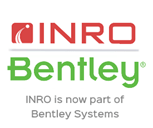Is that automated metro what your customers really want? Some practical considerations in planning a ‘customer first’ railway
Les Chandra
Mott MacDonald, Queensland
This presentation was delivered at the 2021 Online Conference Series and until October 2022 is only available to registered delegates and Content Access Pass holders via Interchange. For information on accessing this and other presentations please review the Content Access Pass options.
ABSTRACT
Most, if not all, transit agencies today have a strategic focus to “put the customer first”. This strategic focus can be contrasted with an operational focus or a commercial focus. This customer focus means paying attention to people and their needs rather than, say, cost of implementation as the overall driving factor. Human centred design and similar techniques are increasingly being used to help design public transport infrastructure such as stations and interchanges. However, in Australia at least, translating customer and potential customers’ needs, wants and expectations to rail service planning is a relatively new concept.
Given that rail services are mass transit and by definition cannot be truly tailored to each individual and their needs, some form of customer segmentation is appropriate. Trip purpose may appear an obvious segmentation approach to take, but in practice it turns out to be unhelpful to the rail planner. In practice, the two dimensions that are most useful for customer segregation are geographic and temporal. Some of the common geographic categories that are in use include “outer suburban resident” and “inner urban resident” while temporal categories include commuter peak, off-peak, night, weekend and holiday periods. A matrix of these dimensions tends to align with common customer expectations regarding comfort and amenity, speed of travel and acceptable waiting times. These then can be translated into specifications for infrastructure and service planning. However, a common language and definitions are helpful to avoid confusion and assist with knowledge transfer.
Author
Les Chandra | Mott MacDonald
Les Chandra is an Principal Transport Planner at Mott MacDonald. While based in Brisbane he has worked on projects across Australia and New Zealand. With close to 20 years in the transport field he specialises in planning for urban rail systems. Les has qualifications in urban planning, economics and railway operations.







